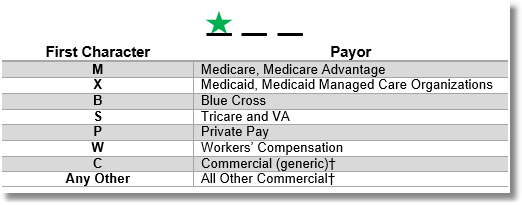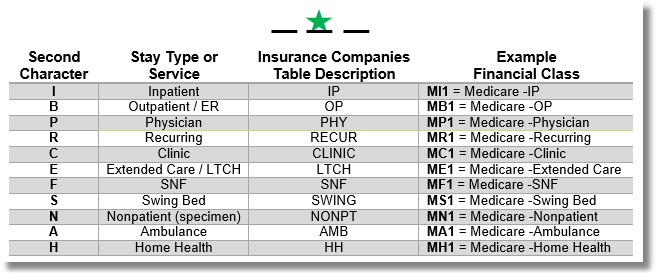|
<< Click to Display Table of Contents >> Financial Class Code Conventions |
  
|
|
<< Click to Display Table of Contents >> Financial Class Code Conventions |
  
|
TruBridge EHR uses a unique Insurance Naming Convention to define a patient’s financial class. A Financial Class Code is used to classify an account for billing and reporting purposes and these codes may be up to three characters. Several codes have been reserved to represent the most common Insurance Companies.
Each character in the Financial Class Code is used to identify the type of claim more accurately.
First Character
The first character of a Financial Class Code is used to identify the insurance carrier.

Financial Class Code - First Character
It is recommended to establish standard codes that clearly distinguish contracted payers from non-contracted payers. Implementing this enables the use of Census Edits to help ensure staff is appropriately notifying patients of out-of-network services.
† Financial Class Codes beginning with “C” should be reserved for generic commercial payors only and used if a Financial Class Code is not already set up. Additional letters may be used to designate commercial insurance carriers to allow further segmentation. The only letters which may not be used for commercial insurance are the Financial Class Codes which have already been designated by TruBridge.
Second Character
The second character of a Financial Class Code identifies the Stay Type or Service the patient is receiving such as an Outpatient or a service with a physician component. Standard descriptions should be used when setting up Financial Class Codes in the Insurance Companies Table to ensure all options are displayed when searching.

Financial Class Code - Second Character
NOTE: Additional second character codes may be used as long as they are outside of the TruBridge defined characters.
Third Character
The third character of a Financial Class Code is optional but may be used to further differentiate coverage types within a payor group.

Financial Class Code - Third Character